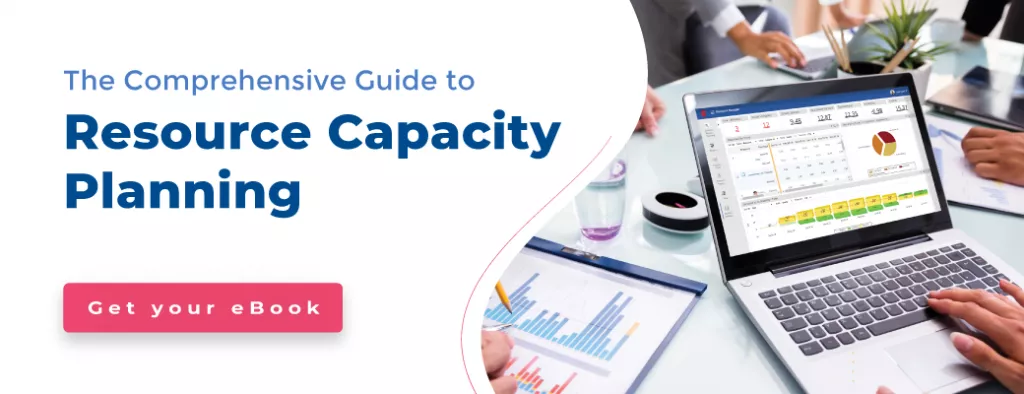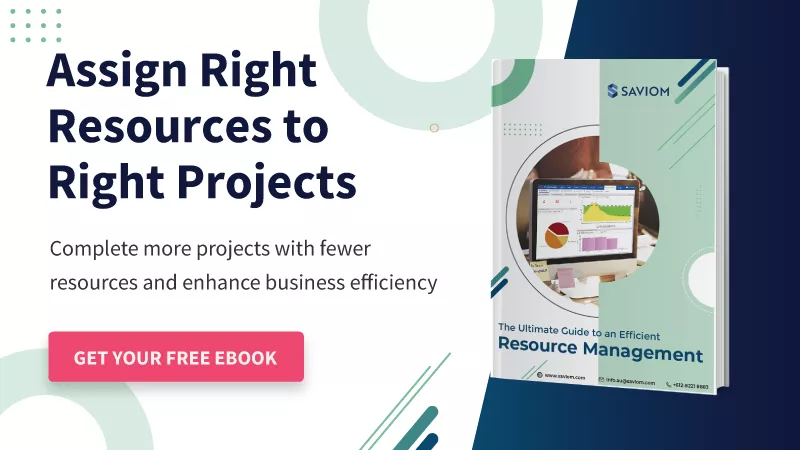Have you ever wondered how a coworker or manager can give it their all at work without taking it home with them? The secret lies in a healthy work-life balance.
Balance is crucial to physical and mental wellness. The lack of balance is detrimental to productivity in the long run.
A Harvard Business School research revealed that workplace stress resulted in companies spending between 125 to 190 billion USD on healthcare.
And yet, it’s difficult for some old school managers to let go of the notion that longer hours signify better productivity. When they’re not overworked themselves, their teams are. It doesn’t get any better for staff who are underworked or benched. They live under a cloud of uncertainty that their jobs are not secure, impacting their employability.
An imbalance in work-life sets off a chain reaction that culminates in stress, fatigue, and ultimately, disinterest at work. Fortunately, there’s a solution that ensures everyone can stay productive, skilled, and relevant in today’s highly competitive job market. Resource management is evolving into a discipline in its own right, with software that lets managers tap into an optimized resource pool.
In this post, we’ll go into how resource management helps bring about a work-life balance.
What is a Work-Life Balance?
Work-life balance refers to individuals achieving an equilibrium between business and personal commitments. Employees can prioritize the demands of their job role as well as that of their personal life.
In a corporate setting, the desire to demonstrate how invaluable we are leads us to set aside our well-being. It starts small, with the occasional weeknights or weekend work. But before you know it, you’re working nearly every day, and when you aren’t, you’re thinking about what you haven’t completed. It snowballs to a point where you’re unable to truly relax and spend quality time in the company of people you love and care about.
The Importance of Work-Life balance in Keeping Businesses Operational
Work-life balance is important because it encourages you to stay organized, self-disciplined, and control what you do on company time. In other words, the focus is on working smarter rather than harder. A person who masters prioritizing can not only surpass expectations at work but can transition into roles with greater responsibilities.
That being said, mismanaged time isn’t the only reason for poor work-life balance. Other reasons include;
- Unreasonable deadlines and expectations.
- Increased responsibilities at both work and home.
- Departmental Tug-of-war for the same resource(s).
- Caregiving and parenting
- Inability to delegate.
A good work-life balance lowers stress and the risk of burnout.
According to Statista, 72% of job applicants consider work-life balance an important parameter when choosing a new job.
It’s not just employees who benefit from work-life balance. Employers who offer flexible work schedules get engaged, energetic, and enthusiastic employees in return.
Employees who enjoy a healthy work-life balance are happier at their jobs. This reflects in the quality of output produced. Even metrics such as trust ratings and customer satisfaction scores are linked to employees who enjoy what they do professionally without foregoing leisure.
The role of Resource Management Software In Work-life Balance
Where does resource management come into all this? The short answer is that it lets you plan out workloads and finalize the project schedule with optimal allocations. The long answer requires an understanding of what exactly resource management is.
Resource management is the effective and efficient management of resources.
Resource management software comprises planning, allocating, optimizing, and forecasting features for a holistic picture of resource activities and availability for inflight and future projects. Here is how resource management tools help managers and teams alike to achieve work-life balance;
Direct visibility
One of Peter Drucker’s famous management quotes is that “ if you cannot measure it, you cannot improve it.” Practically speaking, how can you measure that which you cannot even see? Direct visibility is crucial to understanding resource activities across projects.
A resource management software displays bookings on a Gantt scheduler which lets you see work done, work-in-progress, and pending or unfinished work. It enables you to shorten or lengthen existing bookings based on the nature of priority and ensures resources can be released and reassigned accordingly. Visibility keeps resources accountable and ensures sidetracked work or forgotten tasks are brought back on track.
Monitors availability status
A resource management software contains advanced sort bys to filter resources by location, team, role, and any other criteria of your choosing. It lists out availability and generates a status report based on the times and projects employees are booked.
This prevents managers from overloading a resource that is thinly stretched as it is. What’s more, it displays those resources that are not only available but also have the bandwidth and competencies for your requirements, be them immediate or down the line.
Read More: Resource Allocation: A Guide on How to Apply it to Project Management
Identifies understaffed projects
Understaffed projects are at risk of missing critical milestones and crossing deadlines. At the worst, such projects invite chaos and added expenses.
Project managers and resource managers can prevent this from happening by identifying those projects that are missing resources. In the same line of thinking, they can determine the type and quantity of resources required to get the project going.
Managers can even prevent resource insufficiencies by reassessing the lead time to deploy resources and the factors impeding it. These include work seasonality, time-offs, bench strength, and resources-in-training.
Corrects and closes skill-gaps
Project managers can scan the bench-time report to determine if the skills benched match the project. Consequently, they can staff the project and trim the bench. They can also confirm if more resources are needed and apply resourcing treatments (i.e., hiring and vacancy fulfillment) ahead of the project going into the pipeline. Recruitment lead times can be timed to ensure that resources are available closer to the project’s start date.
This works out in the project manager’s favor if existing staff will be free and project-ready only after completing any training prerequisites. This is so that teams can balance professional jobs and learning opportunities.
Read More: What is Resource Capacity Planning? An Ultimate Guide for Every Project Manager
Utilizes contingent resources
Not all projects require full-timers to commit every hour of their workday to it. Gig workers can take up one-off and flexible projects and services. It is a cost-saving measure that also takes some of the workload pressure off from full-timers. After all, you will not add contingent resources to your payroll permanently. Their efforts can be brought onto a unified scale using the Full-time Equivalent (FTE), which turns up in utilization heatmaps.
Project managers can size up the project’s priority, duration, and resource requirements at the likelihood of conversion stage itself to determine the type of resource best suited to staff it.
Forecasts capacity against demand
A resource management tool generates reports on demand and capacity, resource utilization, and availability, which lets you see skill gaps and rectify workload imbalances. It analyses projects in the pipeline regarding the number, skills quality, and experience to clear the bench, hire more or reshuffle resources.
Profiles areas of interests for employees
There are two objectives to achieve. One, employees can explore areas of interest, and two, there is enough work to go around. Letting employees pick projects that they can experiment with instills self-confidence and helps them acquire new knowledge. It also encourages them to take an active interest in their role and career trajectory with the firm.
The open seat feature, for instance, informs staff of positions and projects available. A resource management tool validates that the resource expressing interest is a fit for the position that they are applying for. It notifies them if they are chosen or lists out other options if they aren’t.
Read More: Project Resource Management: An Ultimate Guide on How to Master it
Tips to Balance Work and Lifestyle
Facilitate two-way communication
Managers should lead by example. Those managers who turn into workaholics will sooner or later expect their staff to follow suit. And the truth is, not everyone can keep up with unrealistic schedules and impossible standards. The crash and burn culture gets to everyone and is only a question of when, not if.
Humanize work such that both managers and teams feel comfortable expressing themselves. Prioritize wellness check-ins and encourage team members to weigh in with their concerns and feedback. Avoid making it a habit to push meetings before or after work hours. Confine it to business hours so that everyone can stay alert and on-topic. If such timings are unavoidable, you can compensate for it by relaxing work deadlines for that particular week.
Cultivate wellness plans
Wellness plans include care packages and access to onsite and offsite facilities. And they need not be expensive measures. It can be as simple as allowing complimentary time-offs for those occasions where you need your team to work weekends.
You can personalize wellness plans to take into consideration what would benefit employees. Subsidized gym memberships, onsite massage, and spa treatments, and meal coupons go a long way in helping employees look forward to coming in to work. These double up as perks and opportunities to recharge with wellness breaks. Some companies employ in-house counselors whose staff can schedule private appointments.
Sometimes, having someone who listens to your problems, empathizes, and works with you to combat them is enough to restore wellbeing!
Read More: Ten Effective Strategies to Reduce Employee Turnover
Encourage employees to utilize time offs
Rather than rolling leaves over or letting them lapse, it would be a better strategy to encourage your workforce to use them up. And when they do, enforce a strict DND to prevent staff from responding to work-related calls and messages.
Initiate Team building activities
Company retreats, both onsite and online, are becoming popular for employers and employees to socialize. They have a break from work and get to know each other beyond job functions. They can form teams to compete in quizzes, sporting and recreational activities, and puzzles. You can incentivize team-building activities with cash prizes, certificates, or trophies.
Some events, such as office picnics and marathons, are family-friendly. Businesses can extend guest invitations to their employees’ family members to make the experience more inclusive. Employees can spend time with both colleagues and family and not feel like they are missing out on either occasion.
Read More: 7 Benefits of Virtual Team Building Activities for Remote Teams
Create an internal interest forum
An Intranet portal or internal forum within the collaboration tools you currently use can be an excellent way for employees to form hobby clubs. They can initiate discussions and bond over areas of interest that they have in common. Workers can also plan leaves together to engage in a pet project or social welfare work they feel strongly about. Having something else to talk about other than work unites your team and gets conversations going!
Practice delegation
Everyone appreciates a manager who isn’t afraid to roll up their sleeves and work alongside the team. But that shouldn’t mean having to do everything yourself. Delegation steers you away from the perfectionist mindset and instead gives the floor to competent resources.
Learning to delegate relieves some of the workload and enables you to assess how teams apply their problem solving skills when they work together. It also lets you see those who are self-starters and take the initiative versus those who prefer staying cautious.
Read More: What are the benefits of talent management?
Meditate
We live in an age that sees us switching from one device to the other. This hardly qualifies as unplugging. You can switch off better through meditative exercises. You needn’t be a practitioner or expert to spend ten to twenty minutes a day in a secluded space. Meditation is proven to fight anxiety-induced stress. It calms you, clears the mind and enables you to get a fresh perspective on problems, thereby finding a solution faster.
Utilize retreats on vacations
Gift yourself a holiday away from work. You can opt to go solo or in the company of a group comprising friends, peers, or family members. A getaway to a trail or trek is not only a change of scenery but also helps you get some exercise in. And we all know how vital regular exercise is to staying and feeling fit.
Consider workplace hybridity
Divide your time between home and work by opting to work remotely for some days of the month. It lets you decide the days you’ll be reporting in person and those days you’ll be logging in from home. A hybrid workplace gives its workforce the flexibility to spend time at home while attending to office matters. Just remember to inform the rest of the team so that they can update their calendars and coordinate with you.
Read More: Resource Management: A Comprehensive Handbook for Project Managers
The Bottom line
Work-life balance is a question of respecting boundaries. It applies to everyone regardless of where you are in your career. A resource management software like Saviom can help you take control of your work and personal commitments. It ensures projects, tasks, and functions remain on track without forcing anyone to work overtime. Happy and healthy colleagues support and motivate each other. Isn’t that what work relationships should be about?
The SAVIOM Solution
SAVIOM is the market leader in offering the most powerful and configurable solution for managing your enterprise resources efficiently. With over 20 years of experience, this Australian-based MNC has created its global presence across 50 countries and helped more than 100 customers achieve their business goals. SAVIOM also has products for project portfolio management, professional service automation, and workforce planning software that is customizable as per business requirements.












